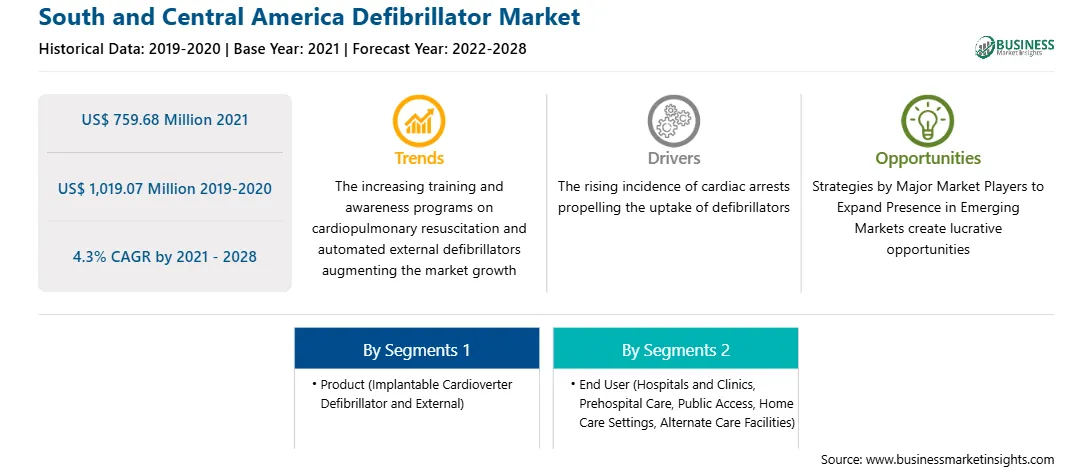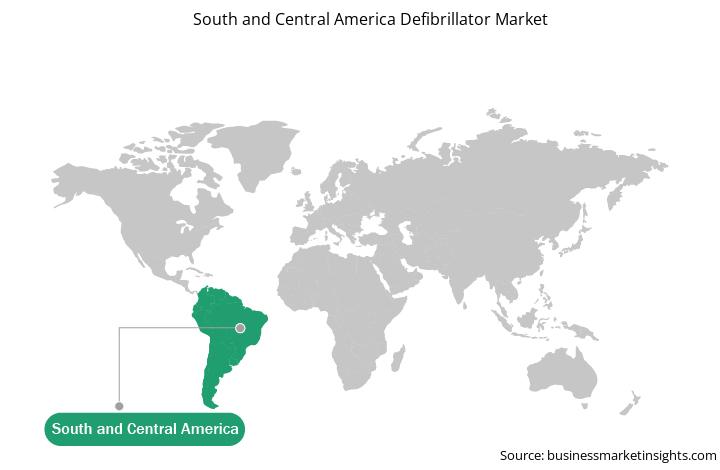Cardiovascular diseases (CVDs) are the leading cause of morbidity and mortality. Unhealthy lifestyles habits, including tobacco consumption, poor diet, obesity, physical inactivity, and excess alcohol consumption, are the leading causes of CVDs. The surging cases of CVDs result in high demand for defibrillators as an essential tool for resuscitation and care of CVD patients in hospitals. With a rise in national healthcare expenditures and disposable household incomes in various regions, the use of defibrillators is expected to increase further to manage CVDs better. Furthermore, amid such high demands for defibrillators as a vital instrument in hospitals, automated external defibrillators are gaining special traction owing to their suitability in the resuscitation of persons having a sudden cardiac arrest (SCA). Thus, the growing incidence of CVDs drives the demand for defibrillators of all types in hospitals, homes, and other healthcare settings, which is further anticipated to drive the market in South and Central America.
The COVID-19 outbreak has stringently affected medical services and medical tourism in the South and Central America. Brazil, Argentina, Uruguay, Chile, Peru, and Colombia are affected by another wave of the COVID-19 pandemic. Various governmental figures show Brazil with 622,251 reported casualties and a caseload of over ~23.5 million since the onset of the pandemic. Also, the country has reported 773,094 cases in a week ending on January 21, 2022, an 84% rise since the previous week. Similarly, Peru has reported an increase of 113% in COVID-19 cases, Chile with 108% increase, and Uruguay with a 37% increase in their weekly reported COVID-19 cases. This increase indicates toward another wave of SARS-CoV-2, which is expected to peak from January to March, 2022; it is anticipated to increase the demand for defibrillators in the region. In Brazil, only a few people suffering from cardiovascular disorders use defibrillators. A study by Card Wherry, et.al., titled “Cost-Effectiveness Analysis of Implantable Cardioverter Defibrillator (ICD) Therapy for Primary Prevention Patients with Additional Risk Factors in Brazil” evaluated the cost-effectiveness of implantable cardiac defibrillators and found ICD therapy was high compared to that of patients with no ICD therapy in terms of total discounted lifetime costs (US$ 18,623 & US$ 8,094 respectively) and quality-adjusted life-years (9.85 & 7.15 respectively). The study showed practical application and a cost-effective model for the application of ICDs for patients at risk. Various donations and relief efforts by organizations such as the International Organization for Migration donated defibrillators to the region. Various governmental efforts led to procuring defibrillators from several manufacturers to combat against the COVID-19 pandemic. The impact on the healthcare infrastructure and an increase in the demand for the product are expected to recover the market losses in the coming years.
South and Central America Defibrillator Market Revenue and Forecast to 2028 (US$ Million)
Strategic insights for the South and Central America Defibrillator provides data-driven analysis of the industry landscape, including current trends, key players, and regional nuances. These insights offer actionable recommendations, enabling readers to differentiate themselves from competitors by identifying untapped segments or developing unique value propositions. Leveraging data analytics, these insights help industry players anticipate the market shifts, whether investors, manufacturers, or other stakeholders. A future-oriented perspective is essential, helping stakeholders anticipate market shifts and position themselves for long-term success in this dynamic region. Ultimately, effective strategic insights empower readers to make informed decisions that drive profitability and achieve their business objectives within the market. The geographic scope of the South and Central America Defibrillator refers to the specific areas in which a business operates and competes. Understanding local distinctions, such as diverse consumer preferences (e.g., demand for specific plug types or battery backup durations), varying economic conditions, and regulatory environments, is crucial for tailoring strategies to specific markets. Businesses can expand their reach by identifying underserved areas or adapting their offerings to meet local demands. A clear market focus allows for more effective resource allocation, targeted marketing campaigns, and better positioning against local competitors, ultimately driving growth in those targeted areas.
South and Central America Defibrillator Strategic Insights

South and Central America Defibrillator Report Scope
Report Attribute
Details
Market size in 2021
US$ 759.68 Million
Market Size by 2028
US$ 1,019.07 Million
Global CAGR (2021 - 2028)
4.3%
Historical Data
2019-2020
Forecast period
2022-2028
Segments Covered
By Product
By End User
Regions and Countries Covered
South and Central America
Market leaders and key company profiles
South and Central America Defibrillator Regional Insights

The South and Central America Defibrillator Market is valued at US$ 759.68 Million in 2021, it is projected to reach US$ 1,019.07 Million by 2028.
As per our report South and Central America Defibrillator Market, the market size is valued at US$ 759.68 Million in 2021, projecting it to reach US$ 1,019.07 Million by 2028. This translates to a CAGR of approximately 4.3% during the forecast period.
The South and Central America Defibrillator Market report typically cover these key segments-
The historic period, base year, and forecast period can vary slightly depending on the specific market research report. However, for the South and Central America Defibrillator Market report:
The South and Central America Defibrillator Market is populated by several key players, each contributing to its growth and innovation. Some of the major players include:
The South and Central America Defibrillator Market report is valuable for diverse stakeholders, including:
Essentially, anyone involved in or considering involvement in the South and Central America Defibrillator Market value chain can benefit from the information contained in a comprehensive market report.